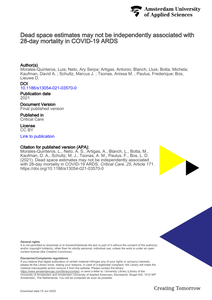BACKGROUND: Family members of patients treated with Extracorporeal Membrane Oxygenation (ECMO) during an Intensive Care Unit (ICU) stay are at risk of developing symptoms of anxiety, depression and Post-Traumatic Stress Disorder (PTSD). Coping strategies used by family members may play an important role in the severity of some of these symptoms.OBJECTIVES: The primary aim of this study was to describe coping strategies used by family members of ECMO-treated patients during ICU admission and recovery period. The secondary aim was to explore the course of the symptoms anxiety, depression, PTSD, and Health Related Quality Of Life (HRQOL) over time.METHODS: In this single-center prospective longitudinal study, validated questionnaires were used to measure coping strategies, symptoms of anxiety, depression and PTSD, and HRQOL in family members of ECMO-treated patients directly after the start of ECMO and at one and six months after the start of ECMO.RESULTS: Family members (n = 26) mainly used problem-focused coping strategies. Symptoms of anxiety appeared to be most present during treatment but decreased over time, as did symptoms of depression and PTSD. HRQOL was severely affected, especially in the mental domain, and did not improve over time.CONCLUSION: In family members of ECMO-treated patients, problem-focused coping mechanisms were most prominent. Psychological functioning was impaired on admission but improved over time, although a mild reaction to stress remained.
DOCUMENT
The COVID–19 pandemic led to local oxygen shortages worldwide. To gain a better understanding of oxygen consumption with different respiratory supportive therapies, we conducted an international multicenter observational study to determine the precise amount of oxygen consumption with high-flow nasal oxygen (HFNO) and with mechanical ventilation. A retrospective observational study was conducted in three intensive care units (ICUs) in the Netherlands and Spain. Patients were classified as HFNO patients or ventilated patients, according to the mode of oxygen supplementation with which a patient started. The primary endpoint was actual oxygen consumption; secondary endpoints were hourly and total oxygen consumption during the first two full calendar days. Of 275 patients, 147 started with HFNO and 128 with mechanical ventilation. Actual oxygen use was 4.9-fold higher in patients who started with HFNO than in patients who started with ventilation (median 14.2 [8.4–18.4] versus 2.9 [1.8–4.1] L/minute; mean difference 5 11.3 [95% CI 11.0–11.6] L/minute; P, 0.01). Hourly and total oxygen consumption were 4.8-fold (P, 0.01) and 4.8-fold (P, 0.01) higher. Actual oxygen consumption, hourly oxygen consumption, and total oxygen consumption are substantially higher in patients that start with HFNO compared with patients that start with mechanical ventilation. This information may help hospitals and ICUs predicting oxygen needs during high-demand periods and could guide decisions regarding the source of distribution of medical oxygen.
MULTIFILE

BACKGROUND: Estimates for dead space ventilation have been shown to be independently associated with an increased risk of mortality in the acute respiratory distress syndrome and small case series of COVID-19-related ARDS.METHODS: Secondary analysis from the PRoVENT-COVID study. The PRoVENT-COVID is a national, multicenter, retrospective observational study done at 22 intensive care units in the Netherlands. Consecutive patients aged at least 18 years were eligible for participation if they had received invasive ventilation for COVID-19 at a participating ICU during the first month of the national outbreak in the Netherlands. The aim was to quantify the dynamics and determine the prognostic value of surrogate markers of wasted ventilation in patients with COVID-19-related ARDS.RESULTS: A total of 927 consecutive patients admitted with COVID-19-related ARDS were included in this study. Estimations of wasted ventilation such as the estimated dead space fraction (by Harris-Benedict and direct method) and ventilatory ratio were significantly higher in non-survivors than survivors at baseline and during the following days of mechanical ventilation (p < 0.001). The end-tidal-to-arterial PCO2 ratio was lower in non-survivors than in survivors (p < 0.001). As ARDS severity increased, mortality increased with successive tertiles of dead space fraction by Harris-Benedict and by direct estimation, and with an increase in the VR. The same trend was observed with decreased levels in the tertiles for the end-tidal-to-arterial PCO2 ratio. After adjustment for a base risk model that included chronic comorbidities and ventilation- and oxygenation-parameters, none of the dead space estimates measured at the start of ventilation or the following days were significantly associated with 28-day mortality.CONCLUSIONS: There is significant impairment of ventilation in the early course of COVID-19-related ARDS but quantification of this impairment does not add prognostic information when added to a baseline risk model.TRIAL REGISTRATION: ISRCTN04346342. Registered 15 April 2020. Retrospectively registered.
MULTIFILE
